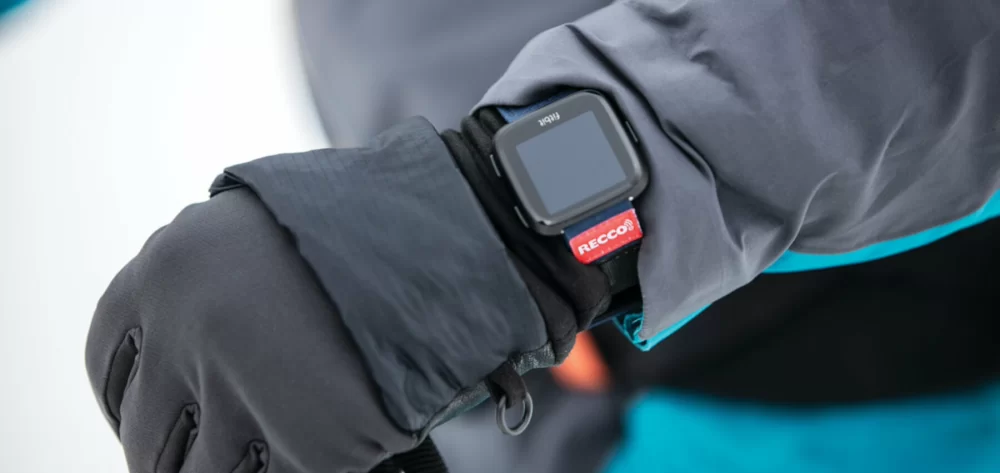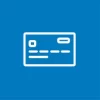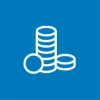Fitbit Pay is a mobile payment system from Fitbit, a major producer of digital fitness-tracking devices. Fitbit Pay is compatible with a number of Fitbit wristwatches and fitness trackers. Here, moneyland.ch answer key questions about using Fitbit Pay in Switzerland.
1. How do I pay with Fitbit Pay?
Simply press the button on your Fitbit device for 2 seconds to activate Fitbit Pay. Then enter your PIN and hold the device near the point of sale (POS) terminal. The transaction then occurs automatically via near-field communication (NFC).
2. Which Fitbit devices work with Fitbit Pay?
Fitbit Pay can be used with some models of the Fitbit Charge, Fitbit Ionic, Fitbit Sense, and Fitbit Versa.
Tip for finding compatible devices: On the back side of your Fitbit wristwatch or other wearable, you will notice text surrounding the heartbeat tracker. If this text includes Fitbit Pay, the device is compatible.
3. Do I have to authenticate Fitbit Pay payments?
At least once a day, you must enter a PIN in order to unlock your device’s screen. You will also have to activate your device for the first payment which you make after each time that you first put on your watch. In some cases, you will have to authenticate some individual payments.
4. What are the requirements for using Fitbit Pay?
In order to use Fitbit Pay, you need to have a credit card from a card issuer which collaborates with Fitbit. You also need an NFC-compatible Fitbit device.
A smartphone or tablet is required for the initial registration and setup process. The app is compatible with the iPhone 6 or newer, as well as most Samsung Galaxy phones and many other Android smartphones.
5. Which credit cards work with Fitbit Pay?
Swiss Visa and Mastercard cards from these issuers can be used with Fitbit Pay: Bonuscard, Cembra Money Bank, Cornèrcard, Migros Bank, Postfinance, Raiffeisen, Swiss Bankers (Mastercard prepaid cards), Topcard (including the Coop Supercard credit cards), UBS, Valiant und Viseca (includes cantonal banks and regional banks). Fitbit Pay is not currently supported by Swisscard.
A number of cards from foreign issuers which are available and popular in Switzerland are also compatible. These include Revolut and Wise.
Tip: The credit card and prepaid card comparison on moneyland.ch makes it easy to find all Swiss credit cards which work with Fitbit Pay. Just select the Fitpay Pay filter under Services.
6. Are there limitations on payments with Fitbit Pay?
The only limits which apply are the limits applicable to the linked credit card or prepaid card.
7. Where can I use Fitbit Pay to pay?
You can use Fitbit Pay to pay at any merchant which accepts NFC payments. That means you can use Fitbit Pay to pay anywhere where contactless card payments are accepted – including most Swiss businesses and many merchants in Europe.
8. Which fees apply to payments with Fitbit Pay?
You as a Fitbit user do not pay additional Fitbit fees. The only fees which apply are those charged by your card issuer, just the same as when you use your card to pay directly.
9. How much does it cost to pay outside of Switzerland?
When you use Fitbit Pay outside of Switzerland, you pay the foreign transaction and currency exchange markups charged by your card issuer, just as you do when you pay with your credit card. Depending on which card you use, the combined foreign transaction fee and currency exchange markup can easily be equal to 2 to 4 percent of the amount transacted.
10. Do I earn bonus points, airline miles or cash back when I use Fitbit Pay?
If your credit card rewards you for purchases, you earn the same rewards when you use Fitbit Pay that you earn when you pay with your card directly.
11. How secure is Fitbit Pay?
Fitbit Pay uses tokenization. Your card issuer generates a token card number which corresponds to your actual card number. Merchants only receive and store your token card number, so your actual card number is never shared when you use Fitbit Pay.
If your card includes a liability waiver for fraudulent transactions, this benefit also applies to transaction made with the card via Fitbit Pay.
12. How secure is Fitbay Pay with regards to privacy?
The three most recent transactions are recorded in Fitbit Pay. Fitbit cannot access this information. Only your credit card issuer can connect the token number on Fitbit Pay to your actual card number and your transaction history.
13. What would happen if I lost my device?
If you ever lose your Fitbit device, you can use the Fitbit app on your phone to remove the linked credit card.
If you lose both your Fitbit device and your phone, you can log in on fitbit.com and remove the linked credit card.
Doing this only disables access to your credit card from Fitbit Pay, but does not affect your actual credit card. You can continue to use your credit card to make payments directly.
14. What are the advantages of Fitbit Pay?
Fitbit Pay is a practical option for fitness enthusiasts which use Fitbit devices to track their fitness. For example, you can easily pay for an electrolyte drink while working out at a gym. You don’t have to have a phone with you to use Fitbit Pay.
15. What are the disadvantages of Fitbit Pay?
Fitbit Pay is only compatible with a limited number of device models. You also have to have a Fitbit-compatible credit card or prepaid card to use Fitbit Pay. Using a Swiss credit card or prepaid card outside the country can generate high foreign transaction fees.
16. How popular is Fitbit Pay in Switzerland?
Currently, Fitbit Pay is hardly used in Switzerland. Other mobile payment solutions like Twint or Apple Pay are much more popular.
More on this topic:
Interactive credit card and prepaid card comparison

 Deal of the Day
Deal of the Day 






